
ClarinetFest® 2023 in Review
ClarinetFest® 2023 Day 2
Masterclass with Maria Du Toit
by Vanessa Davis
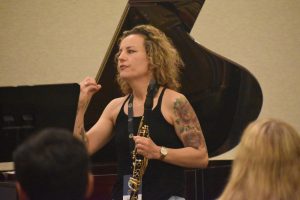
South African born clarinettist Maria Du Toit is a well-known throughout the world with experience as principal clarinettist of the Cape Philharmonic Orchestra, a chamber musician, and most recently a soloist. With such varied and rich experience, it was no surprise that her masterclass was a joy to watch and hear. Four major works of clarinet repertoire were covered throughout the masterclasss: Debussy’s Premiere Rhapsody, Brahms’ Second Sonata for Clarinet, Weber’s First Concerto, and the Nielsen Concerto. With only limited time to work on these titanic works, she asked students to choose a part to work on with her. Overall, the style of teaching was very much artist-teacher, with Du Toit correcting small issues along the way and demonstrating to get exactly the right inflection, before moving on. With students as prepared as all four of these were, this seemed to really help them begin to think of their repertoire in a different way.
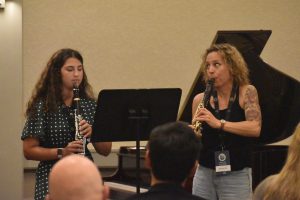
First in the masterclass was SUNY Potsdam clarinet student Gianna Magrino. Starting from the beginning Magrino gave a lovely interpretation of the opening of the Debussy. Du Toit stopped her to work on several important concepts. First, she addressed how to establish atmosphere with the first note. She segued into discussing the overall shape of the phrase, with the student first performing it with direction to the end of the first line, where Du Toit was challenging her to see the first line as only a portion of a musical statement that instead would extend further on. She spent a lot of time talking about observing very closely the dynamics on the page.
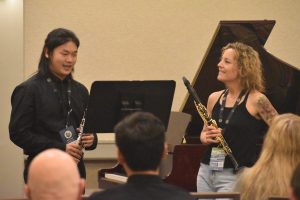
Tiangchin Jin performed the Brahms Second Sonata second on the masterclass. Du Toit took a different approach here and asked the student what Brahms was trying to say, which the student seemed surprised about. It was clear that he had not been asked his feelings about a composer’s intent before; it was beautiful to see a student begin to think differently about a piece they have been working on from one simple question. From there, Du Toit worked with Jin to try to help him elongate his phrases and really pull as much tension and release as possible from each subphrase. The result of the 15 minutes of work was a much more elegant and authentic to Jin performance of the movement.
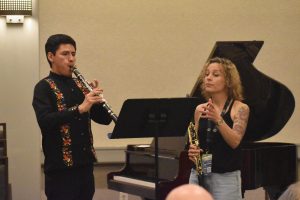
Next, Mexican Clarinetist Julián González performed the opening from Weber Concerto No 1. González’s performance was high confidence from the beginning, working hard to really go for the phrases and character of the piece. Du Toit highlighted his already excellent preparation, as well as the fact that Weber had a strong background in opera, making his dramatic interpretation entirely appropriate. With González, Du Toit focused on making sure that, in an effort to be dramatic and phrase, he did not lose sight of the rhythmic precision required of a soloist. She worked with him gently, doing much more modeling than speaking, which seemed to work very well for González. The resulting phrase lost none of the drama, but gained a lot in rhythmic solidity, making it sound even more confident than before.
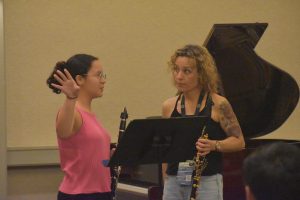
The masterclass closed with Natalia Garcia working on the cadenza from the Nielsen Concerto. Incorporating ideas that she had worked on with the previous three panelists, Du Toit focused on how to build expectation in a cadenza. Garcia did an excellent job of performing the notes on the page as they are written but seemed to shy away from pulling and pushing to accentuate the natural tension and release structure written into the cadenza. Du Toit played a few examples and explained the nature of cadenzas and that they should sound spontaneous, and are in a sense, but that the spontaneity comes from a deep understanding of the music.
Comments are closed.